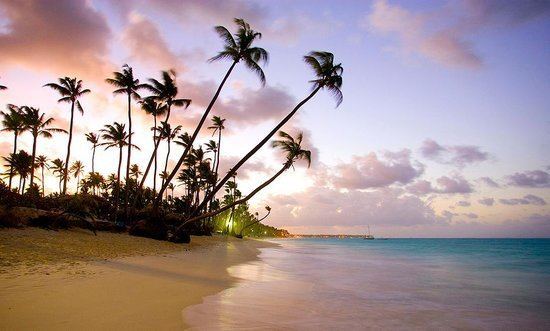Municipality Higüey Local time Thursday 3:53 AM | Incorporated (town) 27 June 2006 Area code(s) 809, 829, and 849 Population 43,982 (2010) | |
 | ||
Weather 23°C, Wind N at 14 km/h, 85% Humidity Points of interest | ||
Punta cana in 4k
Punta Cana is a resort town within the Punta Cana-Bávaro-Veron-Macao municipal district, in the municipality of Higüey, in La Altagracia Province, the easternmost province of the Dominican Republic. The area has beaches and balnearios which face both the Caribbean Sea and the Atlantic Ocean, and it has been a popular tourist destination since the 1970s.
Contents
- Punta cana in 4k
- Map of Punta Cana Dominican Republic
- Geography and climate
- Climate
- Activities and landmarks
- Infrastructure
- Transportation
- References
Map of Punta Cana, Dominican Republic
Geography and climate
The Punta Cana area has an estimated population of 50,000, with an annual growth rate of 6%. To the north, it borders the village and beach of Cabeza de Toro, and the Bávaro and El Cortecito beaches. The nearest city, the 500-year-old Higüey, is 45 kilometres (28 mi) away, which takes about an hour to reach by car. European entrepreneurs, particularly Spanish hotel chains, own all but two of the over 50 megaresorts at the Punta Cana tourism destination.
The province’s 100-kilometre (62 mi) coastline tends to be mildly windy. The ocean waters are mainly shallows, with several natural marine pools in which visitors can bathe without danger. From north to south, the main beaches are Uvero Alto, Macao, Arena Gorda, Bávaro, El Cortecito, Las Corales and Cabeza de Toro, all north of the cape; and Cabo Engaño, Punta Cana and Juanillo south of the cape.
Bávaro is the area starting from Cabeza de Toro until Macao Beach. As the hotels started to rise along the East coast, Bavaro itself became a center of services with shopping malls, fast-food stores, drug stores, fine restaurants, banks, clinics, workshops, supermarkets, and schools. The major town in the district is Veron, now bigger than Higüey in territory, a spontaneous – and poor – urban development running along the original road from the west. Verón, last name of the French proprietor of a timberline business in the early 1930s, is now the base-city for hotel workers and related. It has, besides Bávaro, one of the only four gas stations in Punta Cana. The very next is located 48 kilometres (30 mi) west in Higüey, at the Fruisa crossroads, with a new Texaco gas station opened April 2010, 3 kilometres (1.9 mi) south of Macao beach, and the new Shell gas station close to the airport (on the highway Coral) opened at the end of 2010.
Climate
Punta Cana features a tropical wet and dry climate under the Köppen climate classification. The weather is fairly consistent all year, with an average temperature of 30 °C (86 °F). The hot and humid season lasts from May to October, and during the day temperatures might reach 35 °C (95 °F). From November to March, temperatures during the evening are around 20 °C (68 °F). Very little rain falls around the area, primarily because of the mostly flat landscape, a combination of savanna and mountains.
Activities and landmarks
The area offers water attractions, such as racing speedboats, ziplinning, four-wheeling, catamaran sailing, party boats, deep sea sport fishing, discovery cruises, floating spas, private yachts, swimming with dolphins, snorkeling cruises, swimming with sharks and stingrays, whale watching, reef exploring and visiting small islands like Catalina and Saona.
The capital city Santo Domingo, and Los Haitises National Park, Samaná, are nearby. The Basilica Catholic Monument, built in 1962 and designed by two French architects, is in nearby Higüey, the 500-year-old capital of the Province.
There are several resort developments: the Puntacana Resort and Club, Cap Cana, Motel 6 and the Majestic Elegance, just to name a few.
Infrastructure
The electricity is powered by Consorcio Energetico Punta Cana Macao (CEPM), a wind and solar energy producer led by US-based Argentine businessman Rolando Gonzalez-Bunster.
Transportation
The Punta Cana International Airport is one of the busiest and best connected airports in the Caribbean. In 2014, Punta Cana received over 5.9 million passengers, making it the busiest airport in the Caribbean. Grupo Puntacana built the Punta Cana International Airport in 1984 to facilitate tourism in the area. It was the western hemisphere’s first privately owned international airport.
The buses run through most of the main town and stop running at 10:00 pm.
